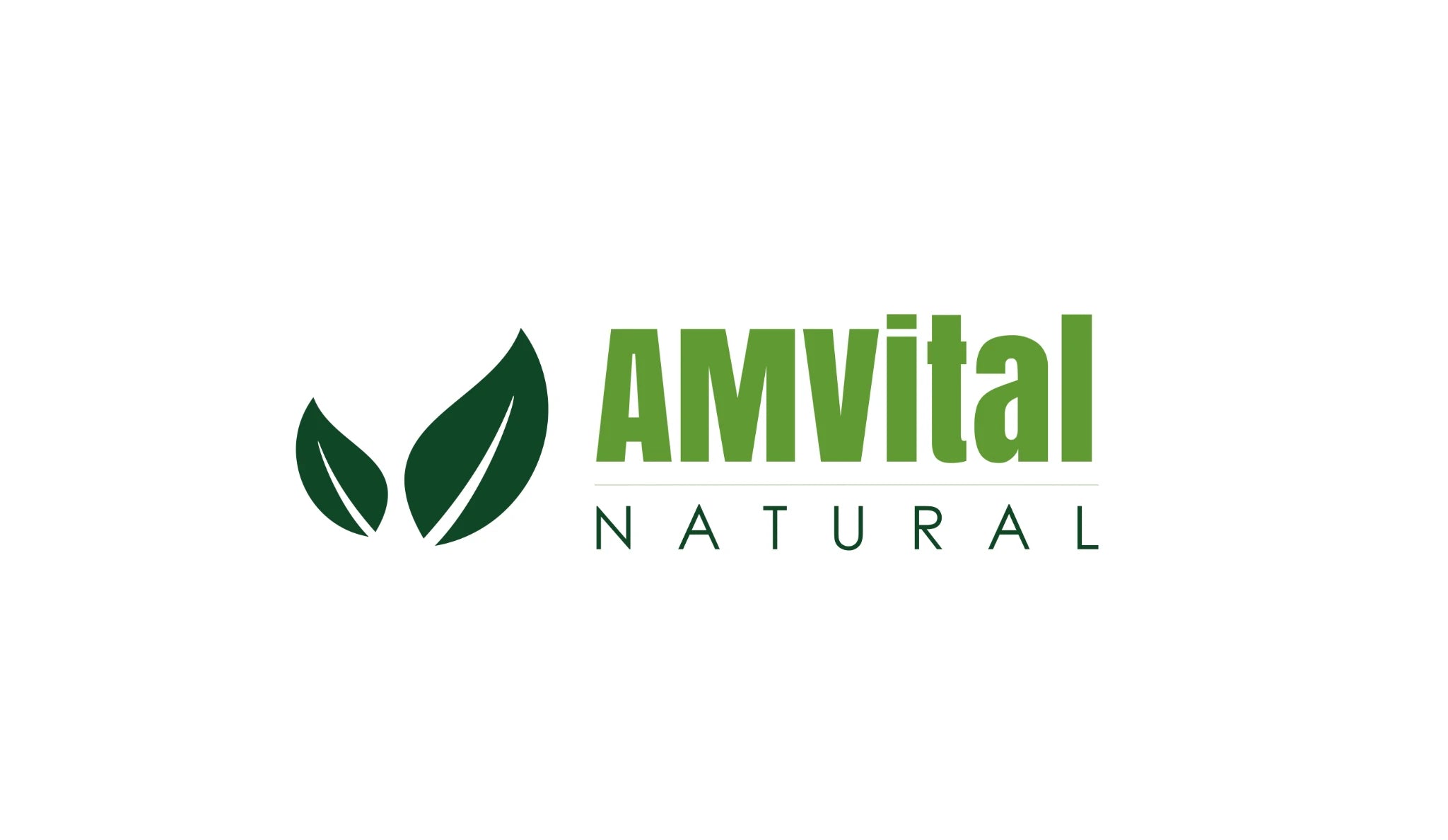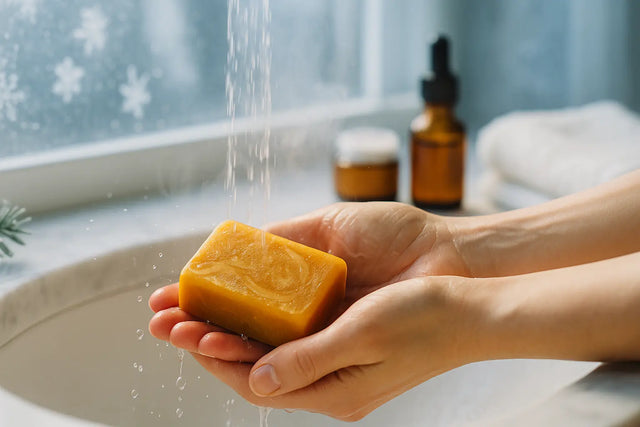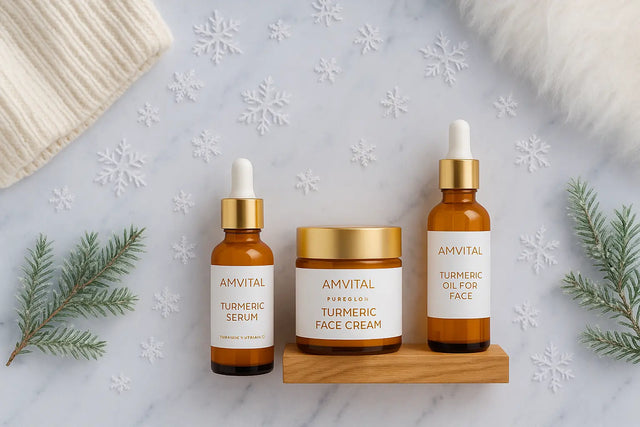📋 Quick Summary
Hydroquinone works faster (2-4 weeks) but carries significant risks including ochronosis and irritation. Turmeric kojic acid takes longer (6-8 weeks) but offers safer, comprehensive benefits with anti-inflammatory properties. Learn which brightening approach is best for your skin type, safety concerns, and long-term goals.
Struggling with stubborn dark spots and wondering which treatment works fastest? You're faced with a critical choice. Hydroquinone promises rapid results but comes with concerning risks. Turmeric kojic acid takes a gentler, slower approach with comprehensive skin benefits.
This isn't just about speed. It's about safety, long-term skin health, and finding the right match for your unique needs. Hydroquinone has been the gold standard for decades. But growing safety concerns and regulatory restrictions have sparked a shift toward natural alternatives.
In this guide, you'll discover how each approach works, who benefits most from which, and when to choose one over the other. We'll compare effectiveness, safety profiles, side effects, and realistic timelines. By the end, you'll know exactly which brightening path aligns with your skin goals and values.
🔬 The Turmeric Science
How turmeric kojic acid works differently than hydroquinone: Hydroquinone inhibits tyrosinase enzyme powerfully but can cause cellular toxicity with prolonged use. Turmeric's curcumin and kojic acid work synergistically—both inhibit tyrosinase while curcumin adds potent anti-inflammatory and antioxidant protection.
Research shows this combination delivers gradual brightening without the oxidative stress or ochronosis risk associated with hydroquinone. The multi-mechanism approach means you get comprehensive skin improvement, not just melanin reduction. This is why AMVital chooses turmeric kojic acid as our primary brightening ingredient.
Understanding Hydroquinone: The Powerful (But Risky) Standard
Let's start by understanding what makes hydroquinone so effective—and so controversial.
How Hydroquinone Works
Hydroquinone is a skin-lightening agent that works by blocking tyrosinase. This enzyme controls melanin production in your skin. By shutting down this process, hydroquinone reduces pigmentation quickly and dramatically.
The mechanism is straightforward: Less tyrosinase activity equals less melanin production. Existing dark spots fade as melanin-containing skin cells naturally shed. New pigment production slows significantly.
This direct, powerful action explains why dermatologists have prescribed hydroquinone for decades. For severe melasma or resistant hyperpigmentation, it often delivers visible results within 2-4 weeks.
The Hydroquinone Controversy
Despite its effectiveness, hydroquinone has become increasingly controversial. Here's why many countries have restricted or banned it.
⚠️ Major Hydroquinone Risks
- Ochronosis: Paradoxical darkening of skin with long-term use (especially in darker skin tones)
- Cellular toxicity: May damage melanocytes permanently with extended use
- Cancer concerns: Animal studies show increased cancer risk (though human data is inconclusive)
- Systemic absorption: Up to 35-45% absorption rate raises concerns about internal exposure
- Rebound hyperpigmentation: Dark spots often return darker after stopping treatment
- Sun sensitivity: Makes skin extremely vulnerable to UV damage
Where Hydroquinone is Restricted
Many countries have taken action against hydroquinone:
- European Union: Banned in cosmetics since 2001
- Australia: Prescription-only since 2011
- Japan: Restricted due to safety concerns
- South Africa: Banned after widespread misuse
- United States: OTC products limited to 2% concentration; FDA reviewing safety
These restrictions reflect mounting evidence about long-term risks. They don't mean hydroquinone never has a place. But they do suggest caution is warranted.
Understanding Turmeric + Kojic Acid: The Natural Alternative
Now let's explore why turmeric combined with kojic acid offers a compelling alternative approach.
How Turmeric Kojic Acid Works
This combination uses two complementary mechanisms. Both target melanin production, but they add protective benefits hydroquinone lacks.
Kojic acid's role: Like hydroquinone, it inhibits tyrosinase. But it does so more gently with lower cellular toxicity. The gradual action reduces irritation risk significantly.
Turmeric's role: Curcumin doesn't just inhibit melanin. It also:
- Reduces inflammation that triggers pigmentation
- Provides antioxidant protection against oxidative stress
- Supports skin barrier function during treatment
- Offers antimicrobial benefits for acne-prone skin
The combination delivers comprehensive brightening. You're not just reducing melanin—you're improving overall skin health simultaneously.
The Safety Advantage
Turmeric kojic acid's safety profile stands in stark contrast to hydroquinone's risks.
✓ Turmeric Kojic Acid Safety Benefits
- No ochronosis risk: Centuries of traditional use with zero cases reported
- Minimal absorption: Topical application stays primarily at skin surface
- Anti-inflammatory: Actually reduces irritation rather than causing it
- No rebound effect: Results maintain after stopping treatment
- Pregnancy-friendlier: Lower systemic exposure (though still consult doctor)
- Long-term safe: Can be used indefinitely without cellular damage concerns
This doesn't mean turmeric kojic acid is without any caution. Some people experience mild sensitivity. Patch testing is always recommended. But the risk profile is dramatically lower than hydroquinone's.
Head-to-Head Comparison: Which Ingredient Wins?
Let's compare these approaches across the factors that matter most.
| Factor | Hydroquinone | Turmeric + Kojic Acid |
|---|---|---|
| Speed of Results | 2-4 weeks for visible fading | 6-8 weeks for visible fading |
| Irritation Risk | Moderate to high | Low to minimal |
| Ochronosis Risk | Yes, especially with long-term use | None documented |
| Sun Sensitivity | Severe—SPF 50+ mandatory | Mild—SPF 30+ recommended |
| Long-term Use | Not recommended beyond 3-6 months | Safe for indefinite use |
| Pregnancy Safety | Avoid—high systemic absorption | Consult doctor—lower risk profile |
| Rebound Effect | Common after stopping | Rare—results maintain |
| Additional Benefits | None—brightening only | Anti-inflammatory, antioxidant, antimicrobial |
| Availability | Prescription (4%) or OTC (2%) in US only | Widely available globally |
| Cost | $15-80+ (prescription visits add cost) | $10-30 for quality products |
💡 Key Takeaway
Hydroquinone wins on speed alone. If you need rapid results for a specific event and can tolerate the risks, it may be appropriate under medical supervision. But for sustainable, safe long-term brightening with comprehensive skin benefits, turmeric kojic acid is the superior choice for most people.
When to Choose Hydroquinone
Despite its risks, hydroquinone has legitimate use cases. Here's when it might be the right choice.
Appropriate Hydroquinone Scenarios
- Severe, treatment-resistant melasma: When other approaches have failed after 12+ weeks
- Medical supervision available: Dermatologist can monitor for early ochronosis signs
- Short-term goals: Specific event in 4-6 weeks requiring rapid results
- Light to medium skin tones: Lower ochronosis risk (though not zero)
- No pregnancy plans: Not pregnant, nursing, or planning pregnancy within treatment period
- Diligent sun protection: Willing to apply SPF 50+ daily without exception
⚠️ Never Use Hydroquinone If:
- You have darker skin tones (Fitzpatrick IV-VI)—ochronosis risk too high
- You're pregnant, nursing, or planning pregnancy soon
- You can't commit to strict daily SPF 50+ application
- You want long-term maintenance (beyond 3-6 months)
- You have sensitive or easily irritated skin
- You want a natural, holistic approach to skincare
If you do use hydroquinone, follow these critical safety rules:
- Use only under dermatologist supervision
- Limit treatment to 3-6 months maximum
- Take 2-3 month breaks between treatment cycles
- Apply SPF 50+ broad-spectrum sunscreen daily
- Watch for paradoxical darkening—stop immediately if occurs
- Use lowest effective concentration (start with 2%)
When to Choose Turmeric + Kojic Acid
For the vast majority of people dealing with dark spots, turmeric kojic acid is the smarter choice. Here's when it's ideal.
Ideal Turmeric Kojic Acid Scenarios
- Safe, long-term brightening: Want sustainable results without health concerns
- All skin tones: Equally safe and effective for light through deep complexions
- Pregnancy or nursing: Lower risk profile (still consult your doctor)
- Sensitive skin: Anti-inflammatory properties actually soothe
- Multiple skin concerns: Addresses acne, inflammation, and aging simultaneously
- Natural approach preferred: Want plant-based ingredients over synthetic chemicals
- Maintenance after hydroquinone: Prevents rebound hyperpigmentation
- Realistic timeline acceptable: Can wait 6-8 weeks for visible results
💛 From Our Community
"I tried prescription hydroquinone for melasma and got scared when my dermatologist mentioned ochronosis risk. Switched to AMVital's Turmeric Kojic Acid Soap six months ago. Results took longer but my skin looks healthier overall. No irritation, no worries. I'm using it indefinitely now."
— Jennifer, verified customer
How to Use Turmeric Kojic Acid Effectively
Get maximum results from turmeric kojic acid by following this protocol:
- Start gradually: Use 3 times weekly for first week, increase to daily if tolerated
- Allow contact time: Let lather sit 30-60 seconds before rinsing for better absorption
- Moisturize immediately: Apply hydrating cream within 2 minutes of cleansing
- Use SPF 30+ daily: Protect skin from UV damage that triggers new pigmentation
- Be consistent: Daily use for 8-12 weeks minimum for optimal results
- Take progress photos: Weekly photos help track gradual improvements you might miss day-to-day
For enhanced results, layer AMVital Turmeric Serum after cleansing and before moisturizer. The concentrated formula delivers deeper penetration.
📅 Realistic Turmeric Kojic Acid Timeline
Can You Combine Hydroquinone and Turmeric Kojic Acid?
This question comes up frequently. The answer is: technically yes, but generally not recommended.
The combination approach: Some dermatologists prescribe hydroquinone for intensive treatment, then transition to turmeric kojic acid for maintenance. This minimizes hydroquinone exposure while preventing rebound hyperpigmentation.
If combining simultaneously:
- Use hydroquinone only at night (as prescribed by doctor)
- Use turmeric kojic acid soap only in the morning
- Never apply both to same area at same time
- Watch carefully for excessive irritation
- Stop combination if any redness or sensitivity develops
💡 Better Strategy
Rather than combining, most people achieve excellent results with turmeric kojic acid alone. The comprehensive approach addresses multiple darkening mechanisms simultaneously. Save hydroquinone as a last resort for truly resistant cases—not a first-line treatment.
Why AMVital Chooses Turmeric + Kojic Acid
At AMVital, we make an intentional choice. Our entire brightening line is built on turmeric and kojic acid—never hydroquinone. Here's why.
Our Philosophy: Safe, Sustainable, Effective
We believe effective skincare shouldn't require compromising your health. Turmeric kojic acid aligns with our core values:
- Long-term safety: No documented cases of serious adverse effects with proper use
- Comprehensive benefits: Brightening plus anti-inflammatory, antioxidant, and antimicrobial effects
- Cultural heritage: Turmeric has 4,000+ years of safe traditional use
- Scientific validation: Modern research confirms traditional wisdom
- Environmental responsibility: Plant-based ingredients from sustainable sources
- Accessibility: Available to everyone without prescription barriers
We're not anti-medicine. Prescription treatments have their place. But for daily skincare accessible to everyone, natural doesn't have to mean less effective.
💛 From Our Community
"After reading about hydroquinone risks, I specifically searched for natural alternatives. Found AMVital and haven't looked back. My post-pregnancy melasma faded beautifully over 3 months. No harsh chemicals near my nursing baby. Perfect solution."
— Michelle, verified customer
Making Your Decision: A Practical Framework
Use this decision tree to choose the right approach for your situation.
Choose Hydroquinone If:
ALL of these conditions apply:
- You have severe, treatment-resistant hyperpigmentation
- You've tried turmeric kojic acid consistently for 12+ weeks without sufficient results
- You have light to medium skin tone (lower ochronosis risk)
- You can commit to dermatologist supervision
- You're not pregnant, nursing, or planning pregnancy
- You understand and accept the risks
- You commit to SPF 50+ daily without exception
Choose Turmeric + Kojic Acid If:
ANY of these conditions apply:
- You want safe, long-term maintenance (most people)
- You have darker skin tone (ochronosis risk too high with hydroquinone)
- You're pregnant, nursing, or may become pregnant
- You have sensitive or easily irritated skin
- You prefer natural, plant-based ingredients
- You want comprehensive skin benefits beyond just brightening
- You're treating mild to moderate hyperpigmentation
- You can wait 6-8 weeks for results
ℹ️ The 12-Week Test
Before even considering hydroquinone, give turmeric kojic acid a full 12-week trial with consistent daily use. Most people who do this discover hydroquinone unnecessary. The gradual results often surprise skeptics.
The Bottom Line on Hydroquinone vs Turmeric Kojic Acid
Hydroquinone works faster. There's no denying it. For severe melasma under medical supervision, it has legitimate uses. But speed comes at a significant cost—irritation risk, ochronosis potential, systemic absorption concerns, and short-term-only safety profile.
Turmeric kojic acid takes a different approach. The timeline is longer. Results emerge gradually over 6-12 weeks. But the trade-off brings massive advantages: comprehensive skin benefits, long-term safety, no ochronosis risk, and sustainable maintenance indefinitely.
For most people dealing with dark spots, the choice is clear. Start with turmeric kojic acid. Use it consistently for 12 weeks minimum. The natural, multi-benefit approach delivers excellent results without compromising your health. Reserve hydroquinone for truly resistant cases—under medical supervision, for short duration only.
Your skin is with you for life. Choose treatments that support its long-term health, not just short-term aesthetics. Ready to start your safe brightening journey? Explore AMVital's turmeric kojic acid collection for professional-grade, natural results.
Frequently Asked Questions
Is hydroquinone stronger than turmeric kojic acid for dark spots?
Yes, hydroquinone works faster—you may see results in 2-4 weeks compared to 6-8 weeks with turmeric kojic acid. However, hydroquinone carries higher risks including skin irritation, ochronosis (paradoxical darkening), and potential health concerns with long-term use. Turmeric kojic acid works more gradually but offers a safer profile with anti-inflammatory benefits and no risk of rebound hyperpigmentation.
Can I use hydroquinone and turmeric kojic acid soap together?
Not recommended without dermatologist guidance. Combining multiple brightening agents dramatically increases irritation risk. If you want to use both, apply hydroquinone at night as directed by your doctor, and use turmeric kojic acid soap only in the morning. Most people achieve excellent results with turmeric kojic acid alone, making combination unnecessary. Learn more about building a safe routine.
Why does AMVital choose turmeric kojic acid over hydroquinone?
AMVital prioritizes safe, sustainable brightening. Turmeric kojic acid delivers comprehensive benefits including anti-inflammatory, antimicrobial, and antioxidant effects alongside gradual brightening. No risk of ochronosis, safer for long-term use, suitable for all skin tones, and pregnancy-friendlier than hydroquinone. The natural approach provides lasting results without harsh side effects.
Is hydroquinone banned in some countries?
Yes, hydroquinone is banned or restricted in the European Union, Australia, Japan, and several African nations due to safety concerns. It's available by prescription only in many countries. The US allows over-the-counter hydroquinone up to 2% concentration, but prescription strength goes up to 4%. These restrictions reflect ongoing safety debates about long-term use.
Which is safer during pregnancy: hydroquinone or turmeric kojic acid?
Neither is definitively proven safe during pregnancy, but turmeric kojic acid is the better choice. Hydroquinone has higher systemic absorption (around 35-45%) raising concerns about fetal exposure. Topical turmeric kojic acid has minimal absorption and centuries of safe traditional use. Always consult your healthcare provider before using any brightening products during pregnancy. Read our complete guide on pregnancy safety.
✨ Here's to your golden glow! ✨
Choose Safe, Natural Brightening
Experience the power of turmeric kojic acid without the risks of hydroquinone. AMVital's scientifically formulated products deliver visible results in 6-8 weeks—with comprehensive skin benefits that last.
Shop Turmeric Kojic Acid Collection






